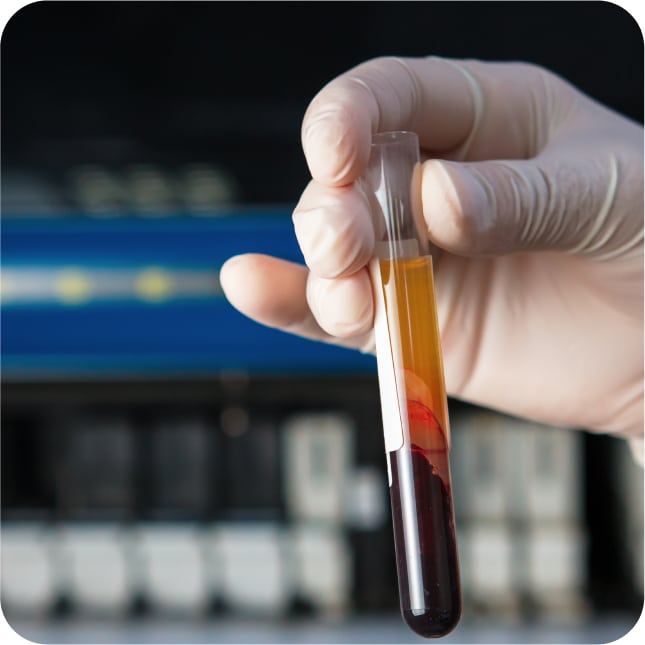Platelet-Rich Plasma (PRP)
Harnessing your body’s own healing properties
What Is Platelet-Rich Plasma (PRP)?
Platelet-rich plasma consists of two elements — plasma and platelets. Plasma is the liquid portion of blood and platelets are a type of blood cell that promotes healing. Platelets contain growth factors that trigger cell reproduction and tissue regeneration.
PRP therapy is created by drawing a patient’s blood (like during a common blood test) and placing the sample in a centrifuge. The centrifuge spins rapidly, causing the blood to separate into its different components and allows for the collection of platelet-rich plasma. This concentrated plasma solution is put into a syringe for injection into the affected area.
Common Uses for PRP Injections


Other Medical Conditions Treated with PRP Therapy
- Lumbar Spine Disc Pain
- Cervical Spine Disc Pain
- Facet Joint Arthritis and Pain
- Sacroiliac (SI) Joint Dysfunction and Pain
- Radiculopathy (Pinched Nerve)
- Rotator Cuff Injuries and Tears
- Arthritis in the Knee, Hip, Ankle, Shoulder, Elbow, and Hand
- Muscle and Tendon Injuries and Tears
- Knee and Ankle Sprains
- Plantar Fasciitis
Benefits of Platelet Rich Plasma (PRP)
As a non-operative method that stimulates regeneration and provides pain relief, platelet rich plasma (PRP) therapy can help patients of all ages get back to life in a matter of weeks. This approach, particularly platelet rich plasma for knee conditions, contrasts sharply with surgeries that may require months for a full recovery. Alternative treatments like corticosteroids can have limitations regarding how frequently they can be administered, making PRP a compelling option.
By using plasma rich platelet injection, regenerative medicine can rev up your body’s healing engine while avoiding some of the side effects typically associated with other medications.
Since PRP is a regenerative medicine modality, it doesn’t merely mask pain or symptoms. Instead, it targets and heals the root cause of the problem naturally.Benefits of platelet rich plasma injection in the knee include:
- Shorter recovery time compared to surgery
- No anesthesia required
- Natural healing procedure
- Increased functionality and range of motion
- Effective solution to avoid or delay surgery
- Improved pain relief and decreased inflammation
- Outpatient procedure in the comfort of our state-of-the-art facility
Living Life Again
At VSI, we celebrate every patient’s unique journey as a series of victories, regardless of how big or small. Our logo and brand were crafted for you, our incredible patients. Your progress towards your goals deserves the spotlight, reflecting our commitment to individualized treatment and care. Your Victories are what make VSI who we are! #MyVictoryStory

Am I a Candidate for Platelet-Rich Plasma (PRP)?
Recovering from an injury can often feel like a long, winding road back to health. However, for athletes and weekend warriors diagnosed with an injury or condition, the possibility of choosing surgery could also mean extensive recovery time.
Patience and persistence are two crucial factors in creating the best possible recovery outcomes. But there is also another element that can offer a significant advantage without drastic or problematic side effects.
PRP injections are a popular, drug-free treatment that helps the body accelerate its natural healing process. It can treat various conditions, including sports injuries, wounds, back injuries, and osteoarthritis. It is even used cosmetically to treat hair loss and facial procedures. It can be injected into injured or damaged joints, muscles, tendons, and ligaments and doesn’t require anesthesia, making it a quick and effective treatment option.
At VSI (Virginia Spine Institute), we regularly use platelet rich plasma injections as a non-operative, regenerative medicine approach because it offers patients low risk and minimal downtime while providing excellent results. For more information, speak with our spine specialists.









